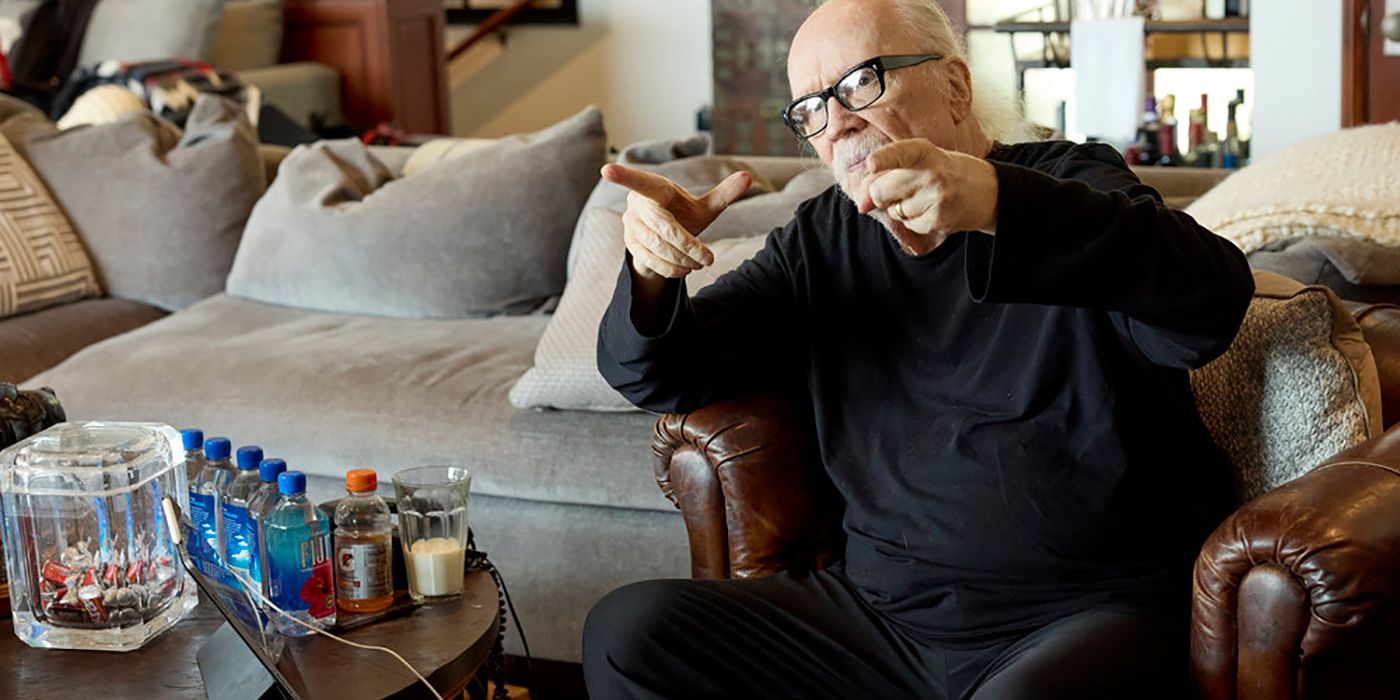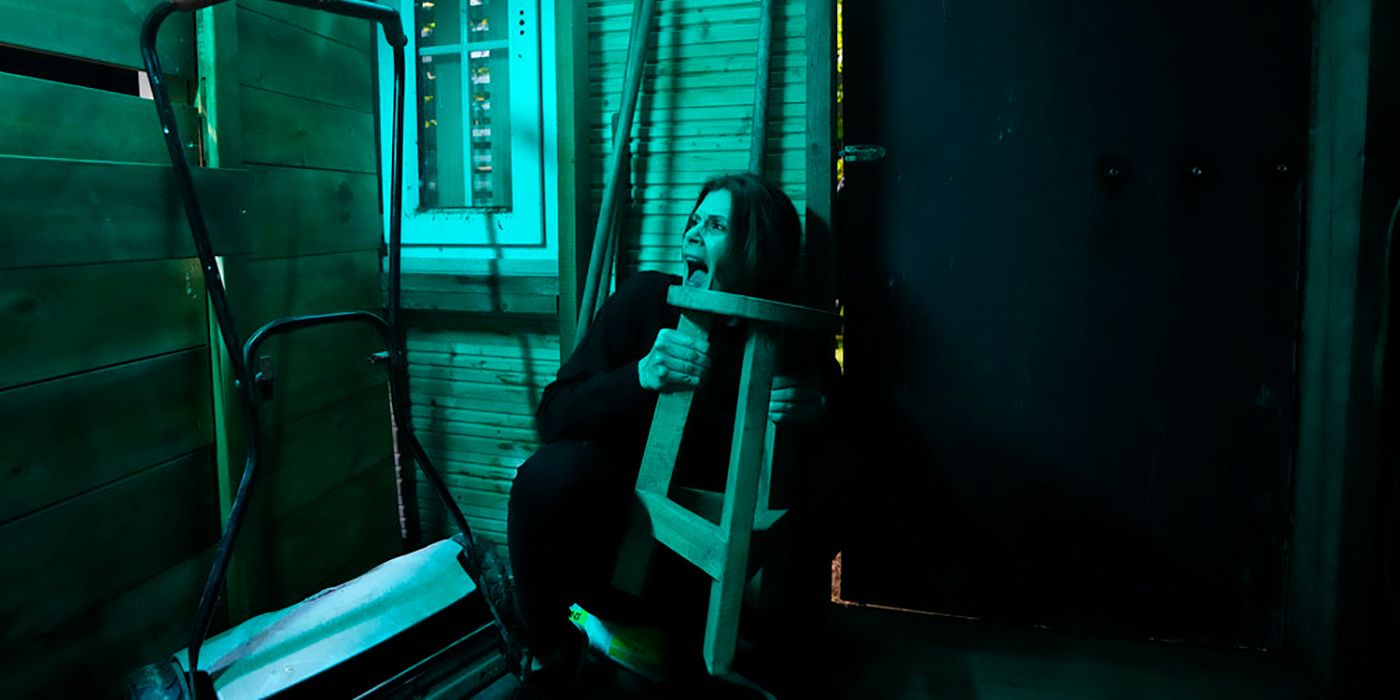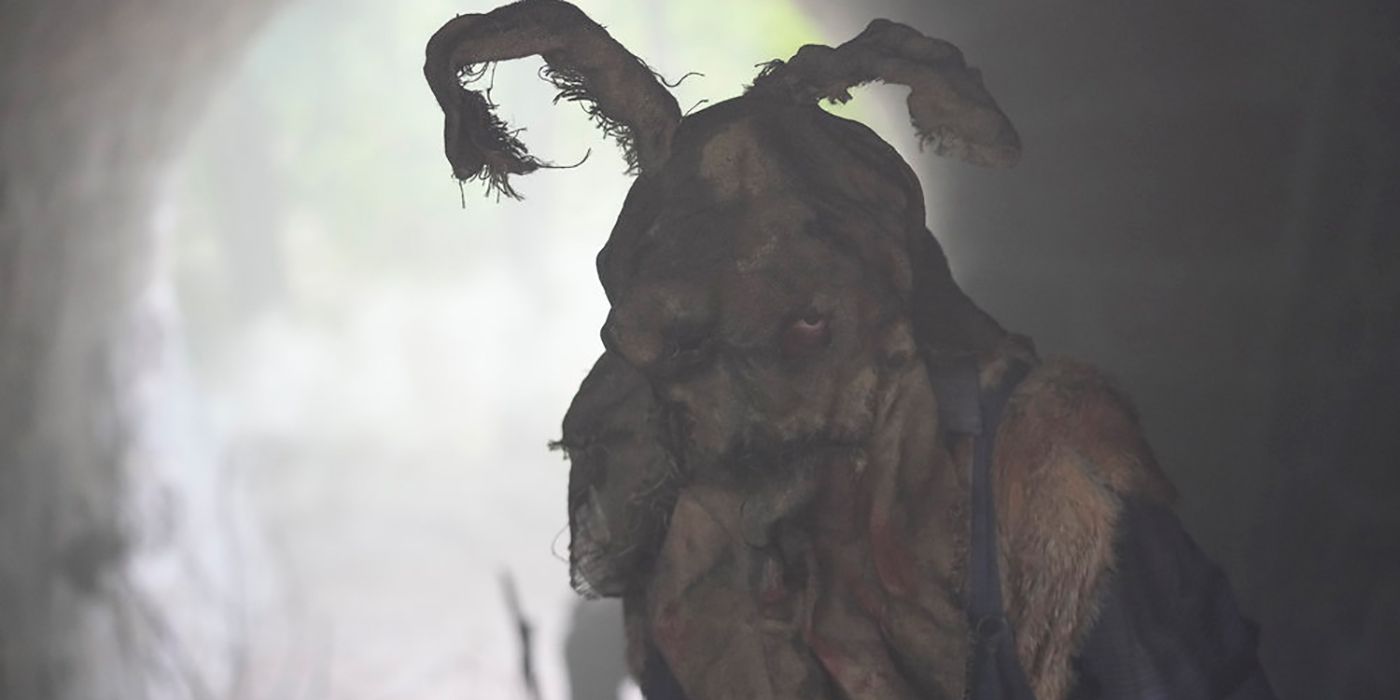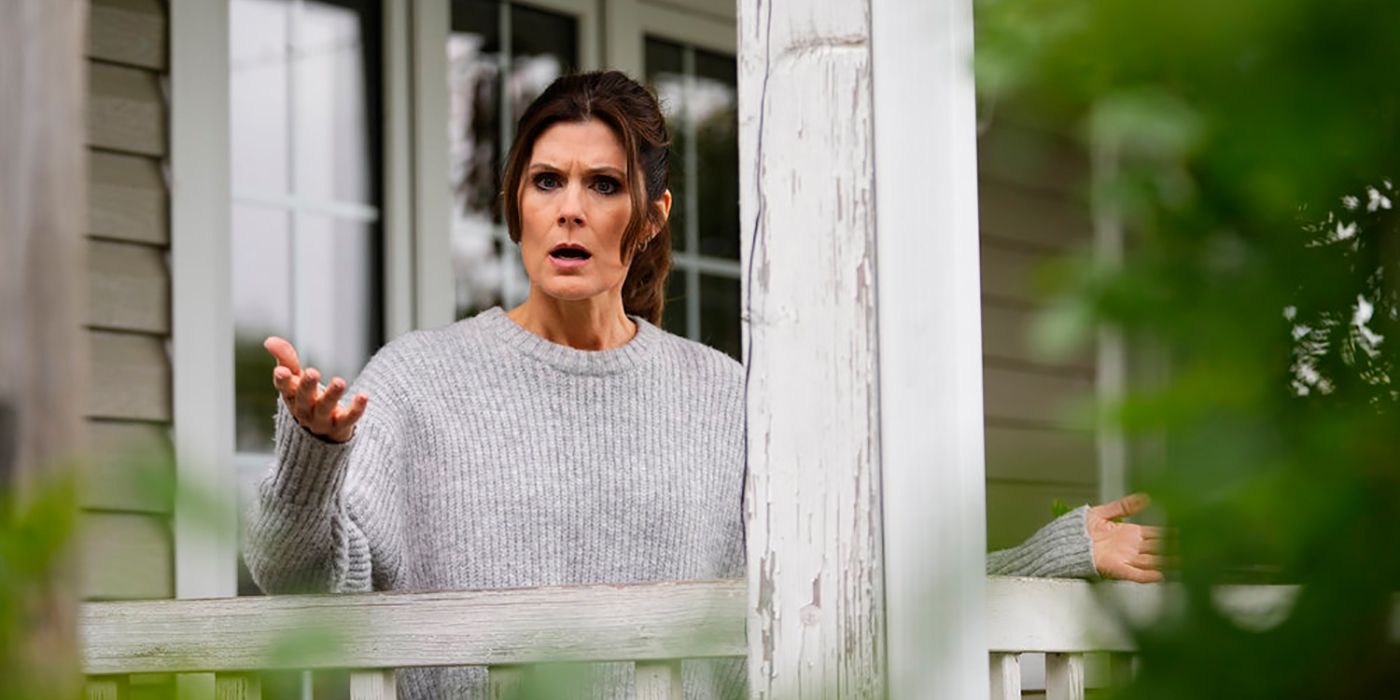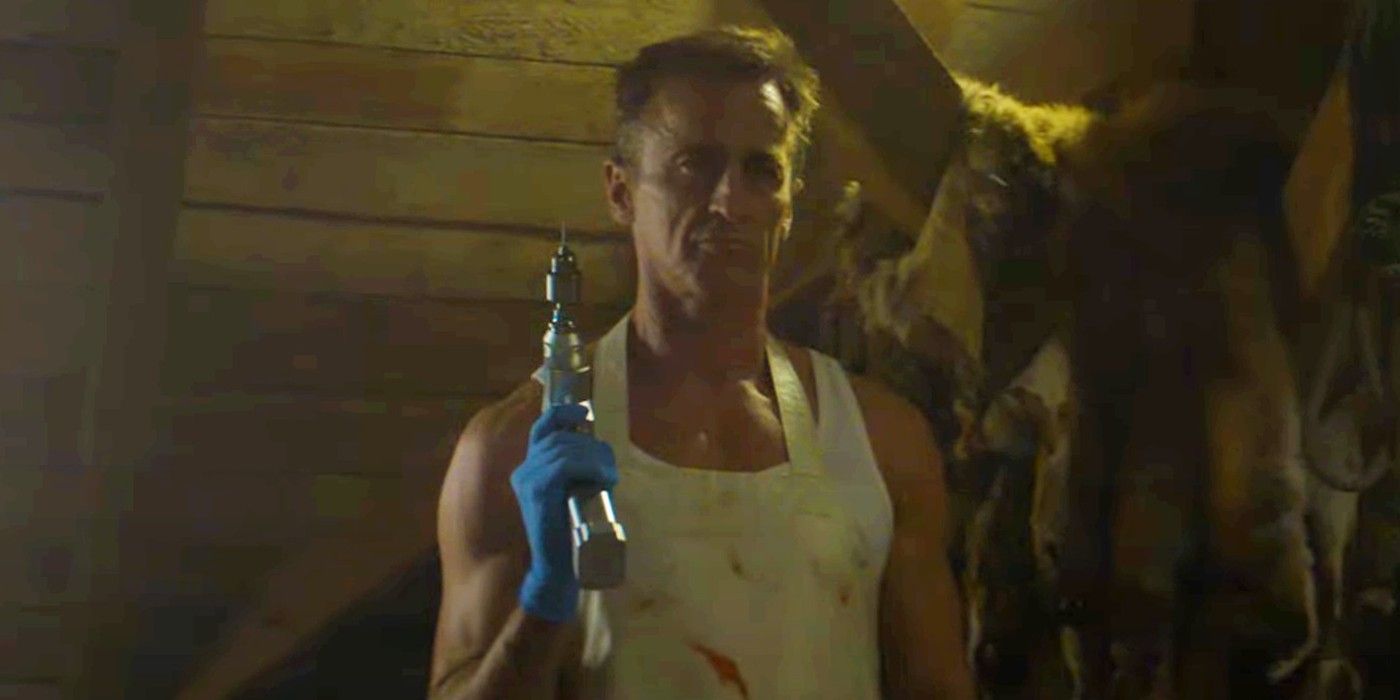Summary
- John Carpenter's Suburban Screams is a genre-busting anthology docudrama that explores true tales of horror in small towns.
- Executive-produced by Carpenter and featuring interviews with real people affected, the show blends terrifying recreations of their experiences.
- The show aims to balance entertainment with respect for the victims, keeping the stories grounded in reality and avoiding unnecessary embellishments.
The master of horror storytelling is exploring a new format in John Carpenter's Suburban Screams. Executive produced by the Halloween franchise creator, the anthology docudrama explores a variety of true stories that have plagued small towns across the country, blending interviews with the real people affected as well as terrifying scripted recreations of what they experienced.
In addition to executive producing, Carpenter is getting back in the director's chair for Suburban Screams for the first time in over a decade, with his last narrative-driven project being the 2010 horror movie The Ward. The rest of the show's episodes are being helmed by Haunted's Jordan Roberts, Trickster's Michelle Latimer, and fellow Haunted alum Jan Pavlacky.
In anticipation of the show's premiere, Screen Rant spoke exclusively with executive producer Sandy King to discuss John Carpenter's Suburban Screams, her and Carpenter venturing into a new genre, and the challenge of balancing respectful interviews with terrifying recreations.
Sandy King Talks John Carpenter's Suburban Screams
Screen Rant: I'm very excited to chat with you, Sandy, especially for Suburban Screams. You and John go far back, career-wise, and John is someone who always tinkers around with projects for a little while, when did this concept first come about for him?
Sandy King: They approached us not long before we went into shooting. During the year before we shot, it was a concept presented to us by the production company, DiGa, and we liked the concept. That's how we wound up doing it, it was kind of simple.
It feels like the perfect expansion since he's created one of the most iconic suburban horror franchises to date. But it also feels like such a unique direction for you both, you've obviously produced a lot of live productions, but for John, he's not done a lot of docudrama-style productions. What was that like for you both exploring this newer genre, this newer format?
Sandy King: It was unusual for both of us, we both like new challenges, so when you present something new to us, it immediately perks our interests. We don't like repeating the same thing over and over again, so the notion of combining unscripted and scripted, and seeing if you could make unscripted compelling in a theatrical way, without lying, without suddenly making it into something else, and making it a takeoff point for a different story just seemed interesting. And to see if we could show a division of a network that you really could do it in an entertaining fashion, and still have the truth behind it, that seemed interesting. It was an evolving process with the production company and with the network to say, "Look, you can do this, and it means letting go a little bit of a lot of documentary stuff, and using the unscripted as touchstones during the scripted to say, 'Yes, this really happened. Yes, these are real people, and this is really their story.'" So that was what got interesting along the whole process from scripting on through.
When you were approached with this concept, were the stories already set, or did you, John and your team go out and look for what stories you wanted to cover?
Sandy King: They were semi set, they had a group of stories they wanted to do, and then we threw out the ones that just were either too paranormal-esque, to where there's really not any reality here. [We] tried to keep it in the realm of feasibility, which what you really want is for people to come away with, "What if that were me?" You wanted stories set from the victim's point of view. Everybody knows — and I always use the Dahmer example, everybody knows about Jeffrey Dahmer, everybody knows about everything that he did, and what happened, but how many people know about the Niecy Nash character, the woman that experienced it downstairs? And then what has her life been ever since? So, anyone that experiences trauma is never the same afterward. You can say, "Oh, the murder was solved. Oh, we caught this. We did whatever. It's all wrapped up," but it's never wrapped up for the victim.
In the case of the semi paranormal, the Ouija board, that kind of thing, it doesn't matter whether you believe Ouija boards are real, it's a matter of people's truth becomes fact to them, and what do they live with after? The idea was to have viewers think, "Okay, if I were at a beer bust party, and I'm sitting around, and it's a joke, and everyone's playing with a Ouija board, and we suddenly connect to the other side. Would I ever feel the same afterward if I really felt I saw the other side?" So, that was more of the focus of that, and I think that in the case of The Phone Stalker, that woman never has resolution because six years later, she's still being stalked, and it's unsolvable. Bunny Man had a couple of true occurrences, but became myth and legend for over 100 years, and people still terrify their children with it, to get them to come home before the dark. So, these neighborhoods are forever affected, these people are forever affected. I find that more interesting than the actual crimes.
I couldn't agree more, especially in regard to both "Kelly" and "The Phone Stalker", watching the interviewees felt very powerful as they really opened themselves up to the camera. Did you get to be there at all, or did you interact with those people, and if so, how did form a trust or bond with them in order to help them feel comfortable for that?
Sandy King: I was there for all of them. They were all very different personalities, some of them are trapped in, or possessed by, those memories. In the case of Beth in "The Phone Stalker," she can't escape it. She has that big tremor. The interviewer was going to wrap up his interview and I made him go back and ask that one question. "Have you always had that palsy? Have you always had the shakes?" And she said, "No, it started with the stalker." Things like the people with The Bunny Man, the one woman who is the historian lives The Bunny Man. She writes the books, this is her claim to fame is Bunny Man, she is as immersed in Bunny Man as if she'd been there and got attacked in the car.
The guy who was the kid who broke into The Bunny Man's house, he lives The Bunny Man, you know, so these people are kind of trapped in that moment. The guy with the Ouija board, I have no idea where he lives in his head, because in his mind, he fell in love with the ghost, and she led him to her grave. But it's actually in the newspapers, he found the grave, so if that's the reality of your experience, I think these people are stuck there. There was a very good researcher who pre-interviewed these people and knew that they were pretty effective, and some better than others. There's another one coming up that was an escaped serial killer who escaped twice and terrorized the town, and I was reminded of that story when a serial killer got out in Pennsylvania recently and terrorized a whole town, just because he was out. In the case of our story, the serial killer would escape and keep killing people in the same town, terrifying.
What is it like working with the writers of the scripted segments and working with those directors to ensure that as much as you're delivering thrills, you're also staying true and respectful to the people that you've interviewed for this?
Sandy King: A lot of red penciling to not draw outside the lines. There's a temptation sometimes to want to embellish the stories, and I really didn't feel we should do that. I felt that the real stories were good enough, and that we didn't need to fictionalize their lives. So, the scripted is not fictional, there'll be a moment, maybe, that is a hallucination, something that gets made up to strengthen the vision, or strengthen something, but it might be 20 seconds out of an hour. Outside of that, no, the things that are depicted are real.
For a scripted segment, did you find any one story to be the most exciting or the most challenging to help put together?
Sandy King: There were practical problems with "The House Next Door," that director was really facing a tough challenge because of trying to find two houses that looked American, we were shooting in the Czech Republic, and it was hard to find two houses aligned so that it was feasible a kid was looking from one house to the other. It was just practical shooting problems, there were practical problems with making Czech Republic look like America, things like that, trying to make sure that we were able to shoot these.
These were low budget, and had to be done fast, most of those episodes were shot in four days, so trying to keep the production values high to give the viewers the most high quality camera work, sets, all of that within a very short amount of time, it just took planning. I thought that the directors, John, Jann, Michelle, and Jordan did one, tried to keep that level high. It was challenging and took a template of how to get this done, how to make your locations work, how to pare them down. So those were the things that was the hardest on as an executive producer over there, just kind of going, "Okay, does it work? It doesn't work all the way, you can't shoot it here." [Chuckles] That's the practical side of me.
I was also a big fan of Body Bags back in the day, and I loved John's on-camera work in that one. Was there ever a point in the development of this in which you or he considered having him do something like that or narrate a little more than just the opening credits for this show?
Sandy King: There was really no time and no budget to make him up to do something creepy. [Laughs] But mostly it was a matter he was on the clock for delivering some soundtracks stuff and everything else, and it was really down to the wire in getting these episodes delivered, so you couldn't really play around too much.
About John Carpenter's Suburban Screams
John Carpenter’s Suburban Screams is a genre-busting unscripted horror anthology series from the mind of legendary director, writer, and producer, John Carpenter. The series explores the dark secrets and unspeakable evil that sometimes lurks beneath the surface of the sun-drenched streets, manicured lawns and friendly neighbors of suburbia. Each episode focuses on one true tale of terror, told by the real people who lived through it. Their firsthand accounts are brought to life through premium cinematic scene-work, news clips, home photos, and archival footage, combining the visual language of horror films with the tools and techniques of documentaries, creating a uniquely frightening experience for viewers.
John Carpenter's Suburban Screams begins streaming on Peacock on Friday, October 13.
Source: Screen Rant Plus

